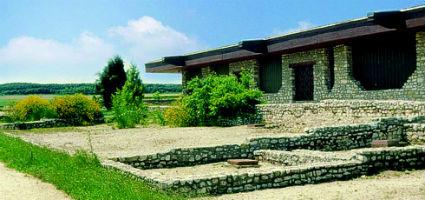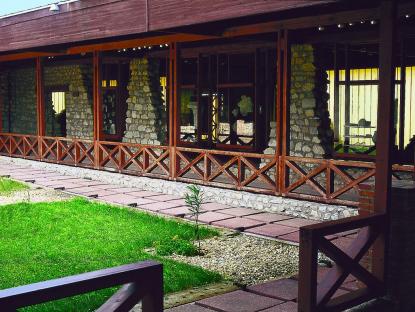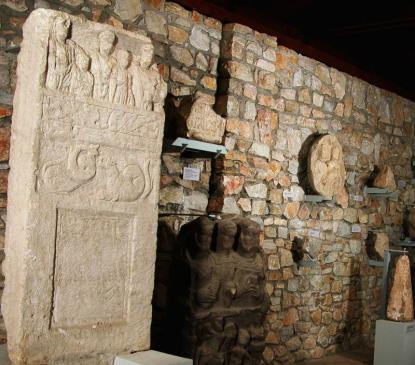2025. July 19. Saturday
Villa Romana Balaca - Nemesvámos - Baláca
 |
Address: 8248, Nemesvámos - Baláca
Phone number: (88) 265-050, (88) 788-191
E-mail: info@vmmuzeum.hu
Opening hours: 01.05-31.08.:Tue-Sun 10-18
01-30.09.: Tue-Sat 10-18 |
In the region of Veszprém and Lake Balaton lies the largest villa-based territory. The nearness of the springs and the mild climate provided favourable conditions for the agriculture.
The forests nearby gave a generous supply for the brick burning ovens and smaller workshops. Roads leading towards Aquincum were easily accessible. The same roads were used for the early Italian import of ceramics and glass.
The territory reached its largest extention in the 3rd century. Its centre was bordered by a wall. There were flower and vegetable gardens, agricultural units and yards within the wall.
The family that moved here from Italy in the 2nd century, wished to have the same conditions here as well. They rebuilt the main building and according to Italian customs put paintings and mosaics on the walls. Its burrial place was also made according to the italian style.
There was a break in the world economy around the middle of the third century. After the difficult years they rebuilt the main building. They stopped heating the Northern corridor, and opened the rear wall toward the Norhern garden.
The 4th century still left smaller traces of building works, but the deserted territory finally began to deteriorate. The inhabitants of the neighbouring Fajsz village built dwelling-houses and ovens among their crumbling walls.
The forests nearby gave a generous supply for the brick burning ovens and smaller workshops. Roads leading towards Aquincum were easily accessible. The same roads were used for the early Italian import of ceramics and glass.
The territory reached its largest extention in the 3rd century. Its centre was bordered by a wall. There were flower and vegetable gardens, agricultural units and yards within the wall.
The family that moved here from Italy in the 2nd century, wished to have the same conditions here as well. They rebuilt the main building and according to Italian customs put paintings and mosaics on the walls. Its burrial place was also made according to the italian style.
There was a break in the world economy around the middle of the third century. After the difficult years they rebuilt the main building. They stopped heating the Northern corridor, and opened the rear wall toward the Norhern garden.
The 4th century still left smaller traces of building works, but the deserted territory finally began to deteriorate. The inhabitants of the neighbouring Fajsz village built dwelling-houses and ovens among their crumbling walls.

